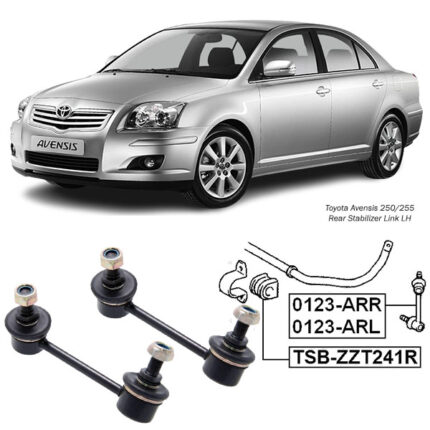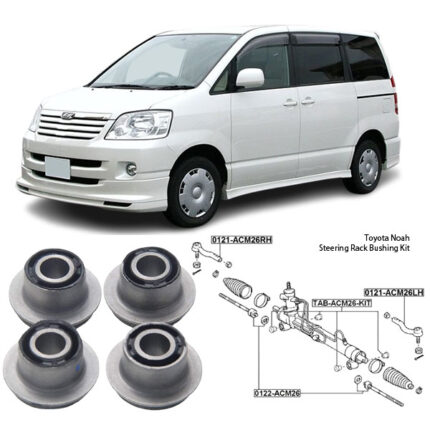-9%
Get Mitsubishi Lancer CY4A 2012 Pulley Idler 0488-CX6A in Kenya
The pulley idler is a crucial component in the engine belt system, responsible for maintaining tension, guiding the belt, and ensuring smooth operation of accessories such as the alternator, power steering pump, air conditioning compressor, and water pump. Without a properly functioning idler pulley, the serpentine belt or timing belt could slip, break, or cause engine malfunctions.
This guide will provide an in-depth explanation of:
- Overview of the Pulley Idler
- Types of Idler Pulleys
- Functions of the Pulley Idler
- Benefits of a Properly Working Idler Pulley
- Common Symptoms of a Failing Idler Pulley
- Causes of Pulley Idler Failure
- Inspection and Maintenance Tips
- Replacement Procedure
- Choosing the Right Idler Pulley for Your Vehicle
Overview of the Pulley Idler
A pulley idler (also called an idler pulley) is a free-spinning pulley used in belt-driven systems to provide the necessary tension, alignment, and routing for the belt. It works by supporting the engine’s serpentine belt, timing belt, or accessory belt, ensuring they stay properly engaged with the driven components.
Main Components of an Idler Pulley:
✔ Pulley Wheel – Typically made of steel, aluminum, or reinforced plastic, it provides a smooth surface for the belt to glide over.
✔ Bearing Assembly – Contains sealed ball bearings that allow the pulley to spin freely and efficiently.
✔ Mounting Bracket or Bolt – Secures the idler pulley to the engine block or accessory mount.
Types of Idler Pulleys
1. Fixed Idler Pulley
🔹 Stationary pulley mounted directly to the engine.
🔹 Guides the belt without applying tension.
2. Tensioner Idler Pulley
🔹 Works in conjunction with a belt tensioner to maintain optimal belt tightness.
🔹 Found in serpentine belt systems.
3. Timing Belt Idler Pulley
🔹 Found in timing belt-driven engines, ensuring smooth camshaft and crankshaft synchronization.
4. V-Belt Idler Pulley
🔹 Used in older vehicles that rely on V-belts for accessory drive systems.
Functions of the Pulley Idler
✔ Guides and Routes the Belt
- Ensures the belt follows the correct path through various engine accessories.
✔ Prevents Belt Slippage
- Helps maintain the correct grip between the belt and driven components.
✔ Reduces Vibrations and Noise
- Smooths out belt movement, reducing friction and engine noise.
✔ Maintains Proper Belt Tension
- Works with the tensioner system to prevent slack or excessive tightness.
✔ Enhances Engine Efficiency
- Ensures optimal power transfer to accessories such as the alternator, AC compressor, and water pump.
Benefits of a Properly Working Idler Pulley
✔ Prevents Engine Overheating – Keeps the water pump running smoothly, preventing cooling system failure.
✔ Enhances Fuel Efficiency – Reduces belt drag, ensuring optimal engine performance.
✔ Extends Belt Lifespan – Proper belt alignment reduces premature wear and breakage.
✔ Reduces Repair Costs – Avoids costly damage to accessories driven by the belt.
✔ Ensures Quiet and Smooth Operation – Eliminates unwanted belt noises and vibrations.
Common Symptoms of a Failing Idler Pulley
🚨 Squealing or Chirping Noise
- A worn-out bearing can cause a high-pitched squeal when the engine is running.
🚨 Visible Belt Wear or Fraying
- A misaligned or defective idler pulley can cause uneven belt wear.
🚨 Loose or Slipping Belt
- If the pulley fails, the belt may become loose, slip off, or cause accessories to stop working.
🚨 Rough or Wobbly Rotation
- If the pulley wobbles or doesn’t spin freely, its bearings are likely damaged.
🚨 Burning Rubber Smell
- A seized pulley can cause the belt to drag and overheat, leading to a burning smell.
Causes of Pulley Idler Failure
🔧 Bearing Wear & Tear – Over time, the ball bearings inside the pulley degrade, causing rough rotation.
🔧 Contaminants & Dirt – Dust, debris, and oil buildup can enter the bearings, causing friction and failure.
🔧 Belt Misalignment – Incorrect belt tension or alignment puts extra stress on the pulley.
🔧 Corrosion & Rust – Exposure to moisture and road salts can degrade metal pulleys.
🔧 High Engine Temperatures – Excess heat can damage plastic idler pulleys, causing cracks.
Inspection and Maintenance Tips
✔ Listen for Unusual Noises – Squeaking or rattling sounds may indicate a failing bearing.
✔ Check for Wobbling or Play – If the pulley moves side-to-side, it may need replacement.
✔ Look for Signs of Wear – Cracks, rust, or belt misalignment indicate a failing pulley.
✔ Inspect Belt Condition – A damaged belt could be a sign of pulley misalignment.
✔ Lubricate Bearings (If Applicable) – Some pulleys have serviceable bearings that require periodic lubrication.
Replacement Procedure for Pulley Idler
🛠 Tools Required:
✔ Socket Wrench & Ratchet
✔ Belt Tensioner Tool
✔ Torque Wrench
✔ Pry Bar (if necessary)
🛠 Step-by-Step Replacement:
1️⃣ Locate the Idler Pulley
- Identify its position within the belt routing system.
2️⃣ Release Belt Tension
- Use a wrench or tensioner tool to loosen the serpentine belt.
3️⃣ Remove the Old Pulley
- Unbolt the old pulley and inspect for bearing wear or cracks.
4️⃣ Install the New Pulley
- Secure it with the proper torque specifications.
5️⃣ Reinstall the Belt
- Ensure the belt is routed correctly before tightening the tensioner.
6️⃣ Check Alignment & Test Run
- Start the engine and listen for any unusual noises or belt misalignment.
Choosing the Right Idler Pulley for Your Vehicle
✔ OEM vs. Aftermarket:
- OEM parts ensure a perfect fit, while aftermarket options can be more affordable but vary in quality.
✔ Material Quality:
- Steel or reinforced plastic pulleys last longer than standard plastic ones.
✔ Bearing Type:
- Sealed bearings offer better protection against dirt and moisture.
✔ Compatibility:
- Ensure the pulley matches your vehicle’s make, model, and belt system.
✔ Brand Reputation & Warranty:
- Choose pulleys from reputable brands with a warranty for added reliability.
Final Thoughts
The pulley idler plays a vital role in maintaining proper belt tension, alignment, and smooth operation of the engine’s accessories. Regular inspection, maintenance, and timely replacement prevent belt-related failures, improving overall vehicle performance, fuel efficiency, and longevity. Investing in high-quality pulleys and bearings ensures a smooth, quiet, and trouble-free driving experience. 🚗💨
Follow us on Facebook for more parts.



